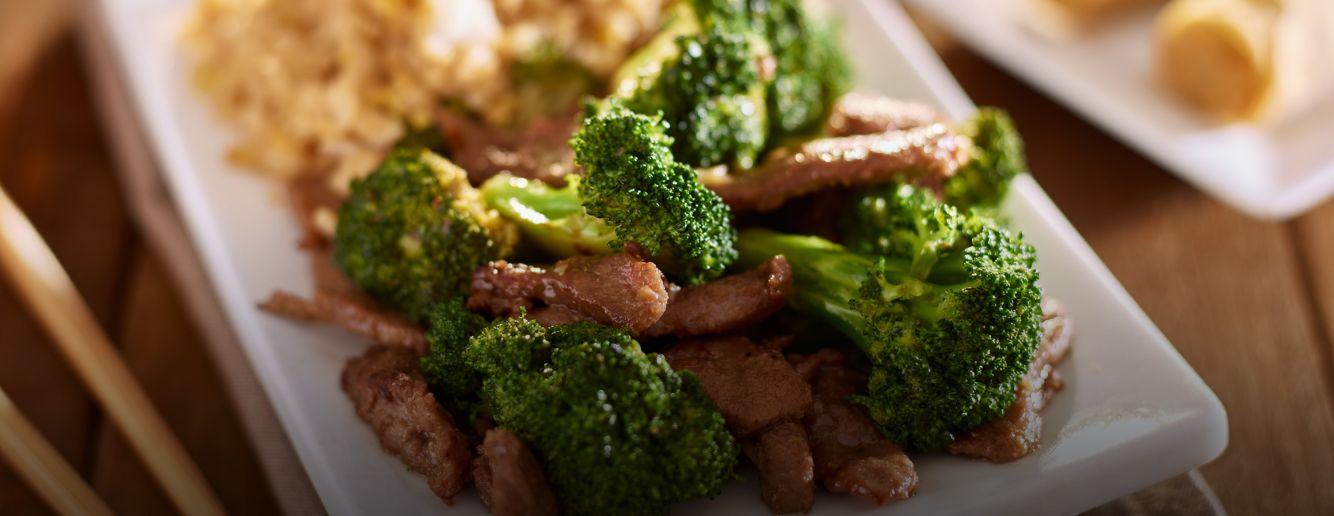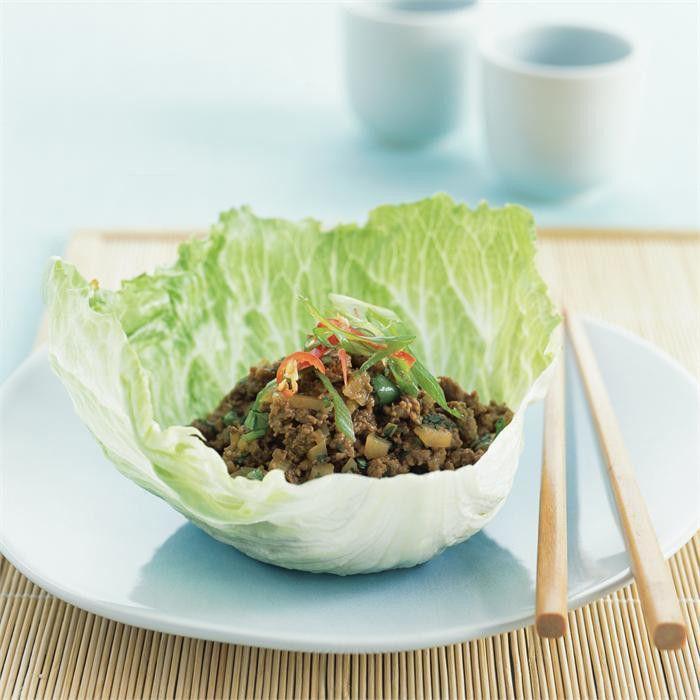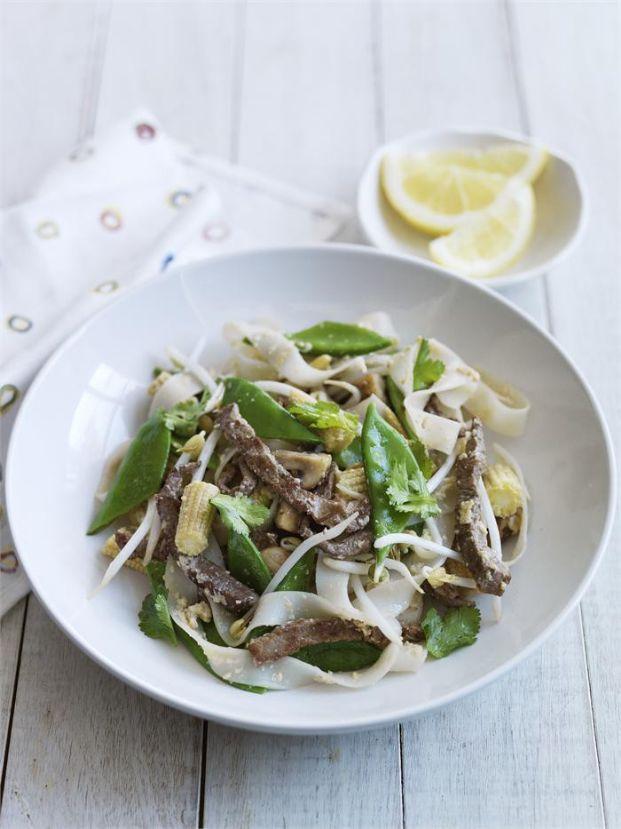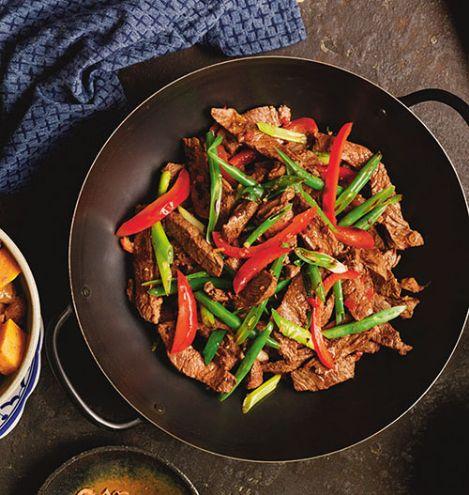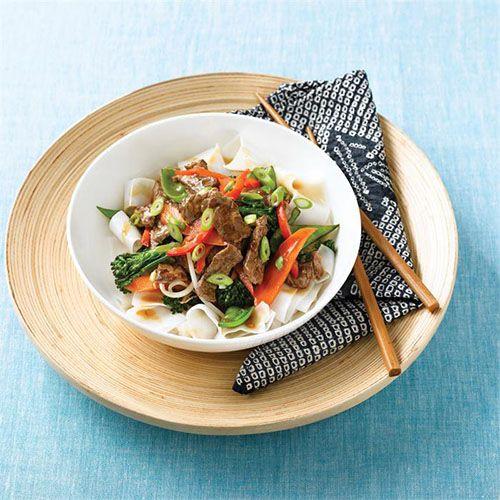- Home page
- Dive into cooking methods 101
- Cooking methods
- 4 steps to try a stir-fry
Nothing beats a beef or lamb stir-fry for taste and goodness. Beef or lamb and a few simple veggies combine to make a very flavoursome, easy, healthy family meal. Use these four basic stir-fry steps as your guide.

Step 1 - Cut meat across the grain into strips of even thickness. Coat the meat in oil instead of adding oil to the wok or pan. You use less oil and there is less chance of the meat sticking to the wok.

Step 2 - Ensure the wok is hot before you begin to cook meat or vegetables. It should be hot enough to evaporate a bead of water on contact.

Step 3 - Cook meat in small batches (about 250g). When you add the meat to the wok, work from the outer side to the centre, where it will be hottest.

Step 4 - Once cooked, set meat aside and return to the wok once the vegetables are cooked and sauces thickened. Stir-fry only to combine – do not reheat meat for too long or it will toughen.
Beef and lamb stir-frying tips
- When stir-frying the meat wait at least 30 seconds before tossing or stir-frying. This gives the meat a chance to brown, giving it good colour and flavour.
- The second side will take a little less time to cook. It's ready as soon as the redness is gone, no longer.
- Once you return the meat to the wok, take care that it does not boil in the liquid or it will toughen. Stir-fry only to combine and warm through.
- Maintaining the heat of the wok is vital to a tender result. Overcrowding the wok with too much meat at once will cause the wok to lose heat and your meat will start to ‘stew’ and toughen. To avoid this, meat must be cooked in the small batches of about 250g.
- Once the vegetables are cooked and you add the liquid ingredients to the wok, make a well in the centre. Add the liquids to the well, stir to heat and thicken. Add the meat and stir to combine with the sauce and vegetables.
Essential tip
Marinades don’t tenderise, but they do add a great flavour. To stop the meat stewing in the marinade as it cooks, drain the meat well before you stir-fry it. Save the marinade mixture and add it with the sauces at the end of the cooking time. Make sure the sauce boils for at least a minute before returning the meat to the wok.

Stir-frying the vegetables
Once the meat is cooked and has been set aside to rest, it is time to cook the vegetables.
- Rinse the veggies and leave a little water clinging to them before cooking.
- Heat the wok; make it hot enough to evaporate a bead of water on contact.
- When cooking the vegetables, rather than pour oil into centre of the wok drizzle the oil so it runs down the sides and into the bottom of the wok. Swirl the oil (without spilling over the sides) to thoroughly cover the base and sides of wok or use a metal spoon or spatula to distribute the oil.
- Heat the oil until it’s hot enough to sizzle a piece of onion or spring onion. The oil will flicker a little when it’s ready (you don’t want it to smoke), and when you add the first ingredient it will sizzle (just like the meat) as it hits the wok.
- Reduce the heat a little if the first ingredients you add are garlic and/or ginger so that they do not burn. Stir-fry for just a few seconds, raise the heat and then add the next ingredient.
- Stagger additions according to how long they cook. Denser vegies like carrot and broccoli go in first. Add other vegetables like capsicum a couple of minutes later.
- The leafy veg like bok choy go in last. Cook them only until just tender or wilted.
- If an ingredient looks like it might burn, add the next ingredient to cool things down. This is a good tip for when garlic, ginger or spring onions are cooking too fast.
- Sauces go in last, let them come to simmering point before returning the meat to the wok.

